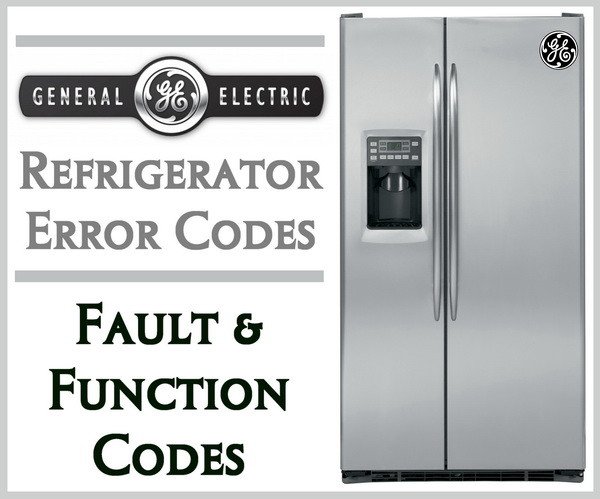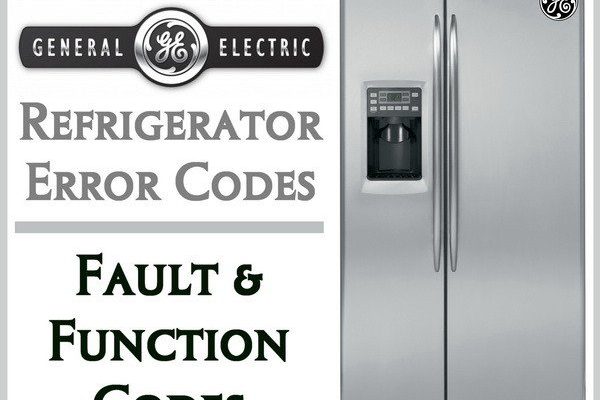
Imagine your refrigerator as a big party where all guests are kept chilled and happy by the diligent fan, circulating cool air throughout. If something goes wrong with the fan, it’s like the air conditioner at the party breaking down. Things start to get heated, and people (in this case, your perishables) become uncomfortable. The fridge flashes the “LE” code to alert you of the breakdown in this cooling process. Let’s dive deeper into why this is happening and how you can fix it.
Understanding the GE Refrigerators Error Code LE
The “LE” error code is essentially your refrigerator’s way of waving a tiny electronic flag, signaling that the evaporator fan motor isn’t doing its job. The evaporator fan motor is crucial because it circulates cold air throughout the fridge and freezer compartments. Think of it like a mini-fan inside a computer that keeps everything running cool. Without it, your fridge can’t maintain the proper temperature, causing your food to spoil more quickly.
Now, you might be wondering why this fan motor decides to quit suddenly. Several factors can contribute to its failure. Commonly, dust and debris build-up can be akin to a clogged vacuum cleaner, which causes the motor to struggle and eventually fail. Additionally, electrical issues, like a faulty connection or a blown fuse, can stop power from reaching the motor, similar to a lamp not turning on because it’s unplugged.
If you’re scratching your head thinking about these potential problems, don’t worry. The next sections will guide you through identifying and addressing these issues, hopefully getting your fridge back to its frosty self in no time.
Common Causes of LE Error Code
One of the most typical causes of the “LE” error code is a blockage that prevents the fan from turning properly. Picture a small twig caught in a bicycle wheel – no matter how hard you pedal, it’s not going anywhere until you remove the obstruction. Over time, dust or food particles can accumulate around the fan blades, stopping them from spinning freely. It’s always a good first step to check for and clear any visible debris.
Apart from physical blockages, electrical faults are a frequent culprit. Wiring issues may occur due to wear and tear or because of a sudden power surge, much like a surge protector tripping to save your computer during a storm. A loose wire or a power issue in your home’s electrical circuitry can lead to loss of power or an interruption in the motor’s performance. This is why it’s a smart move to inspect the electrical connections and ensure everything is secure and receiving power.
Another less frequent, but potential reason for your fan’s failure, could be related to the refrigerator’s control board. This is the brain of your refrigerator, dictating how and when the fan should operate. If the control board malfunctions, it might need to be reset or replaced. It’s like your smartphone freezing and needing a reboot to function correctly.
How to Troubleshoot and Fix the Error
Ready to play detective? Begin by unplugging your refrigerator for safety. Once that’s done, locate the evaporator fan – typically found in the freezer compartment behind the rear panel. Carefully remove any accumulated debris. You can use a soft brush or slightly damp cloth, but make sure everything is dry before turning the power back on.
Next, check the electrical connections to ensure everything is wired up correctly. If you find loose ends, reconnect them securely. If the fan motor hasn’t been resolved after cleaning and connection checks, listen for unusual noises or a persistent silence when you power the fridge. These are telltale signs the motor might need replacement.
If you’re still seeing the “LE” error code, it might be time to consider professional help. Just like you’d call a plumber for a stubborn leak, sometimes it’s wise to let an experienced technician handle more complex electrical or control board issues.
Preventing Future Errors
Now that you’ve tackled the immediate problem, let’s talk prevention. Regular maintenance is like giving your fridge a little TLC to keep it running smoothly. Just as you’d regularly change your car’s oil, periodically check and clean around the fan motor to stop dust build-up before it becomes a problem.
Keep an eye on your electrical setup too. Ensure that your refrigerator is plugged into a dedicated outlet and avoid overloading circuits. Like avoiding overloading a power strip at home, this ensures a steady and reliable power supply, protecting your appliance’s delicate electronics.
Lastly, stay attentive to odd behaviors or noises from your fridge. Catching small issues early can save you from more significant headaches down the line. It’s just like going for regular health check-ups to catch any concerns before they become problematic.
By understanding what the “LE” error code signifies and knowing how to approach it calmly and methodically, you’ll not only have a better-functioning fridge but can also save yourself time, money, and frustration in the long run. Happy cooling!
